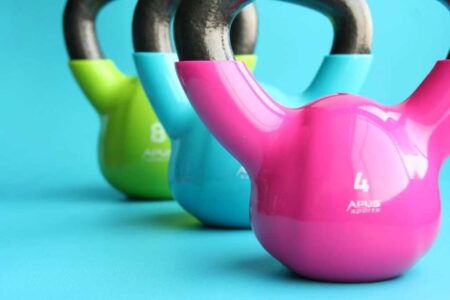Wearing braces can transform your smile, but it’s not without its challenges. From discomfort to dietary restrictions, many people face common issues during their orthodontic journey. In this post, we’ll explore the top five problems associated with braces and provide practical tips to avoid or manage them effectively, ensuring a smoother and more comfortable experience on your path to a perfect smile.
What are Braces, and Why are They Important?
Braces are orthodontic devices used to straighten and align teeth, as well as to correct bite issues. They consist of brackets, wires, and bands that work together to apply gentle pressure to the teeth, gradually moving them into the desired position. The importance of braces for dental health cannot be overstated. Misaligned teeth and bite issues can lead to a host of problems, including difficulty in chewing, speech impediments, and increased risk of tooth decay and gum disease.
By addressing these issues, braces not only improve the aesthetics of a person’s smile but also contribute to their overall oral health. DentalBe offers excellent resources and products to support your orthodontic journey.
If you are looking for a top-notch provider of braces in Washington, DC, Kumra Orthodontics is your premier destination. Their skilled professionals provide tailored solutions to suit your unique dental needs, ensuring a confident and radiant smile.
Problem 1: Braces Discomfort
Wearing braces often involves some degree of discomfort, especially after routine adjustments. As braces work to gradually shift your teeth into proper alignment, the pressure applied can lead to soreness and tenderness in the mouth. While this discomfort is usually temporary, it can still be quite challenging for those who are not accustomed to it.
How to Avoid
To manage the pain and discomfort associated with braces, there are several tips that can be helpful. These include using orthodontic wax to cover any protruding wires or rough edges that may be causing irritation, consuming cold foods and drinks to numb the mouth, and taking over-the-counter pain relievers as recommended by the orthodontist.
Your orthodontist is your best resource for managing braces discomfort. They can offer personalized advice, make adjustments to reduce pain, and suggest additional strategies to keep you comfortable.
Problem 2: Challenges in Cleaning with Braces
Another challenge of wearing braces is the difficulty in cleaning teeth effectively. The brackets and wires create additional surfaces where food particles and plaque can accumulate, increasing the risk of tooth decay and gum problems. Proper oral hygiene is crucial during orthodontic treatment to prevent these issues.
How to Avoid
To maintain good oral hygiene with braces, it is important to brush after every meal using a soft-bristled toothbrush and fluoride toothpaste. Flossing becomes more challenging with braces, but using floss threaders or interdental brushes can help clean between the teeth and around the brackets. Additionally, using an antimicrobial mouthwash can help reduce bacteria in the mouth.
Problem 3: Risks Posed by Certain Foods
Certain foods can pose a risk to braces, leading to broken brackets or wires. Sticky, chewy, or hard foods can damage the braces and prolong the treatment duration. It is important for people wearing braces to be mindful of their dietary choices to avoid any complications.
How to Avoid
Navigating dietary restrictions while wearing braces involves avoiding foods such as popcorn, nuts, hard candies, and chewy snacks. Instead, opting for softer alternatives and cutting food into smaller, bite-sized pieces can help prevent damage to the braces while still enjoying a variety of foods.
Problem 4: Impact of Braces on Speech
Braces can impact speech, especially in the early stages of wearing them. The brackets and wires in your mouth can change the way air flows when you talk, leading to temporary alterations in speech patterns. This adjustment period can be frustrating, but with some practice, you can regain your normal speech rhythm.
How to Avoid
To improve speech while wearing braces, it’s helpful to speak slowly and focus on enunciating clearly. This practice allows your mouth to adapt to the new hardware and helps you maintain better control over your speech. As you get more accustomed to the braces, your speech will likely return to normal.
Problem 5: Broken or Loose Brackets
Broken or loose brackets are among the most common issues with braces. This typically happens when you eat hard or sticky foods, or when there’s accidental trauma to the mouth, such as during sports or other physical activities. When a bracket breaks or becomes loose, it’s important to contact your orthodontist right away to address the problem and avoid further complications.
How to Avoid
To prevent brackets from breaking, avoiding certain foods is crucial. Hard foods like nuts, ice, or popcorn can cause breakage, as can sticky snacks like caramel or gum. Additionally, wearing a mouthguard during sports and physical activities provides extra protection for your braces, reducing the risk of trauma-related damage.
Conclusion
Addressing potential problems with braces is crucial for ensuring a smooth orthodontic journey. To reduce complications and manage discomfort, it’s important to follow your treatment plan, maintain good oral hygiene, and implement preventive measures like using orthodontic wax or consuming cold foods. While wearing braces can be challenging, the results—a straight, beautiful smile—are well worth the effort. A proactive approach and a positive attitude can help you overcome any temporary hurdles and ensure the success of your orthodontic treatment.









